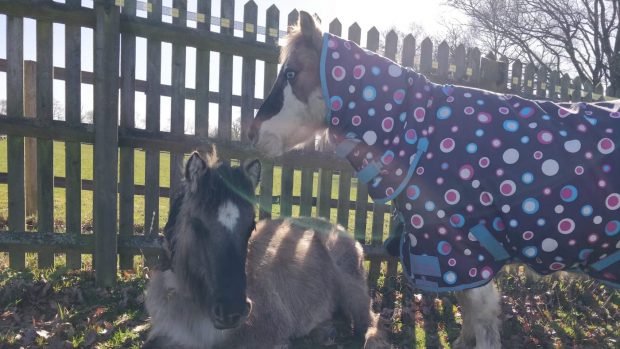Design and function
The liver is the powerhouse of the body. It has a vital role to play in almost every bodily function and is the most important single organ in the body, because every other organ depends upon it.
Individual liver cells are arranged in columns around a central draining blood vessel. Each cell can be rapidly regenerated – the whole mass of the liver is replaced within a few weeks.
The various roles of the liver include some metabolic functions. The liver produces energy and protein building blocks for the body. These are delivered to other organs so that they can function, repair and regenerate cells and organs that die off.
Liver damage
Liver infections can be transient, but may be serious or even life threatening. Both bacterial and viral infections commonly develop, but there may be only mild signs apparent – fortunately, liver damage is usually detectable through blood analysis.
By far the most common cause of serious liver damage in horses in the UK is ragwort poisoning. The toxin hits the cells nearest the gut and these are the focus of the early damage.
This is an insidious killer – each tiny amount of the poison absorbed from the gut causes a corresponding additional amount of damage. There is no such thing as a safe amount of ragwort!
This damage is usually irreversible because the poison destroys the liver substance so the liver cannot regenerate or repair itself in the normal way.
Usually the liver is able to maintain most of its functions, even when large proportions of its tissues are damaged. Only when more than 75% of the liver is damaged will any outward evidence appear – at which point it is probably too late to do anything.
Digestion
The liver plays an important role in digestion – bile, and salts secreted into the bile, help change the acidity of the food as it enters the gut from the strongly acidic stomach.
A lack of bile production alters digestion, particularly the way in which fats are broken down. The horse has no gall bladder and bile is discharged in response to eating, so if a horse is starved for 12-24hr the bile pigments can accumulate in the blood, giving a false impression of jaundice.
Failure to produce and secrete bile salts into the bile duct is a common indication of liver function – if the functional reserve of the liver is exhausted, bile salts will accumulate in the bloodstream, an invaluable test for the overall function of the liver.
Detoxifier
The liver acts as a filtration system to protect other organs from the effects of toxin build-up. It is the body’s own detox system. Poisons absorbed from the gut are removed from the blood before they can affect the rest of the body.
Also, naturally produced poisons such as ammonia (a by-product of protein metabolism) and bilirubin (a by-product of haemoglobin) are converted into safe chemicals that can be excreted. Ammonia is converted into urea for excretion by the kidney, and bilirubin is filtered into the bile for excretion into the gut.
Horses with serious liver disease may have abnormally high ammonia levels in the blood and this can be a major cause of severe neurological dysfunction – fits, seizures, dementia and even death.
When more than 75% of the liver fails, these pigments and other metabolites accumulate in the blood and result in changes in many organs. Failure to excrete the yellow bilirubin pigment allows it to build up in the blood and the visible membranes of the mouth and the eyes and, in severe cases, the skin, become yellow.
This is called jaundice or icterus. Again, there may be secondary effects of these alterations – jaundice commonly causes severe appetite suppression. Jaundice can also occur under other circumstances, so not every jaundiced horse has liver disease.
If the liver is damaged, it may be over-sensitive to sunlight, resulting in a special type of sunburn or photosensitivity. Typically, light-coloured areas, such as on the muzzle and the white lower limbs, are affected.
The liver also manufactures many essential micro-chemicals, such as clotting factors and vitamins. When the functional reserve of the liver is exhausted these are deficient and the horse may bleed from the nose or into the gut or urine.
Iron and other essential vitamins and minerals are stored in the liver until they are required – vitamin and mineral deficiency diseases are a common reflection of liver failure.
Damage to the liver, arising from any cause, has the potential to be life threatening. The most significant harm is caused by disease that either prevents the liver from “healing” or damages too much of the liver, so death intervenes before repair can take place.
Often a horse may be suffering from more than one condition. One condition may be manageable, but a general illness plus liver disease can push the horse over the edge into liver failure.
This is why in some cases of ragwort poisoning the horse may seem to recover reasonably well – usually, the transient problem resolves and restores the function of the liver to over the minimum 25% required for it to work.
Diagnosis – and the future
The diagnosis of liver disease is a major challenge. The signs and tests for these are non-specific and many conditions cause the same “blood picture”. One way to make a categorical diagnosis is by taking a small liver sample and examining it under a microscope.
However, this works only on diseases that affect the whole organ. Where there is a focal problem, there may be no indication of the disease unless the biopsy is taken from the affected area. While biopsy provides very useful information, it is not necessarily an easy or safe procedure.
Signs of liver disease
Mild signs:
Severe signs:
|
||
 |
||


 Get up to 19 issues FREE
Get up to 19 issues FREE TO SUBSCRIBE
TO SUBSCRIBE 


